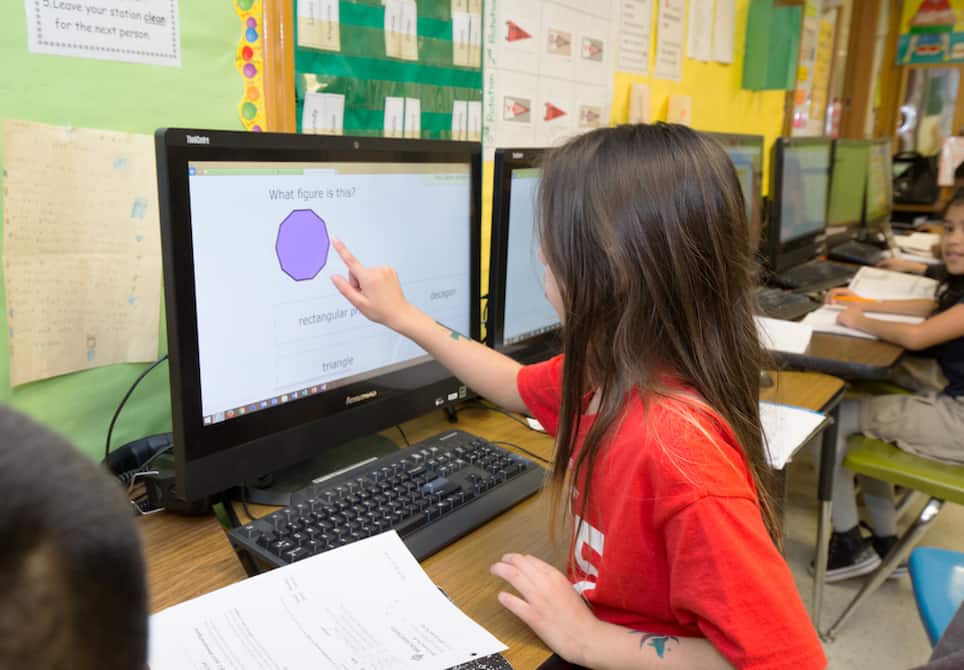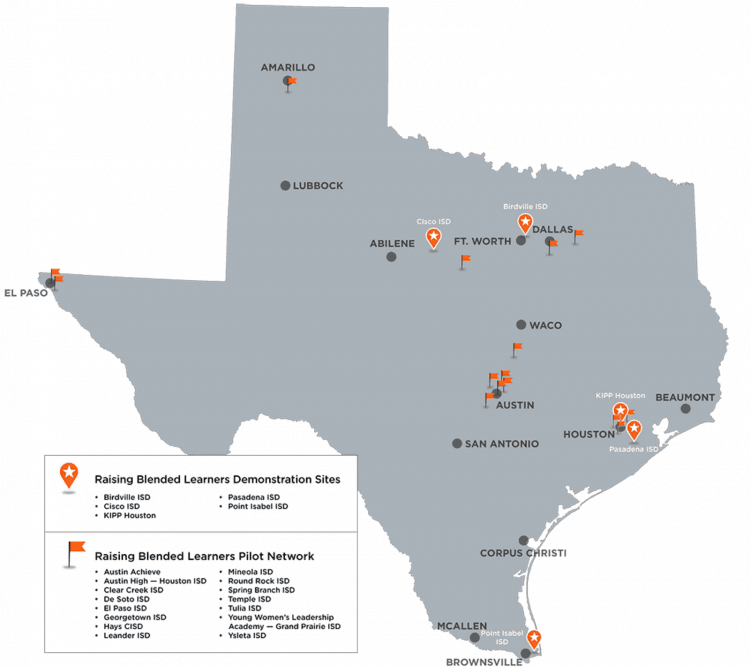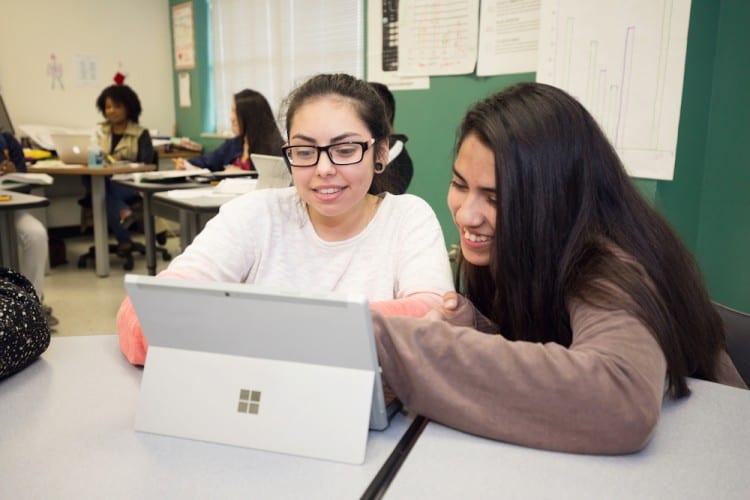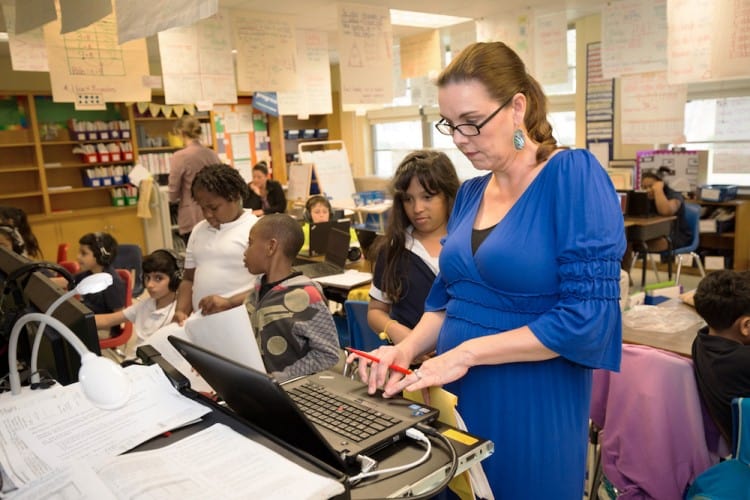Five School Systems to Watch in Texas

By Heather Staker
Point Isabel ISD. Cisco ISD. Birdville ISD. Pasadena ISD. KIPP Houston. Never heard of those school districts before? That’s about to change.
Each of these districts was selected as one of the top five school systems in Texas for showcasing blended learning. From a national perspective, Texas is about to shake things up.
Through a statewide competitive application process, these five systems were selected to receive up to $500,000 each and intensive technical assistance over three years to implement blended-learning plans and serve as statewide demonstration sites.
Raise Your Hand Texas is leading and overseeing the program and used the book Blended: Using Disruptive Innovation to Improve Schools as the framework (full disclosure: I am a co-author of that book, along with Michael B. Horn of the Christensen Institute). CA Group is managing the grant implementation and coordinating technical assistance.
Courtesy of Raise Your Hand Texas
More on Each Winning School
Seventy-five districts and charter school networks competed for the five spots. The stories of the winners are varied and remarkable:
Birdville ISD is a close-knit, traditional community with a small-town feel, despite its growing population. Located outside Fort Worth, the community is becoming more diverse. District leaders are grappling with how to improve literacy, given the increase in its ELL student population. They are pioneering a two-part approach.
As a sustaining innovation, their three traditional high schools will use Station Rotation and Flipped Classroom models to tailor instruction to the needs of their 6th-10th grade students. Meanwhile, as a disruptive innovation, the district is piloting a novel Flex program for its alternative high school, both to recover dropouts and to incubate a new vision for how to deliver an engaging, student-centered high school experience.
Cisco ISD serves a small town of fewer than 4,000 people. It prides itself on its athletic successes, including 2013 AA Division 2 State Football Champions to go along with four other appearances in the championship game in the past 10 years. Its students consistently surpass state standards on the STAAR test (Texas’ accountability assessment); however, the percentage of students who reach the advanced or accelerated tier remains low.
Cisco ISD aims to boost more students to the top level by implementing a personalized Station Rotation model that is competency based, provides students with one-on-one time with teachers, and challenges students to deepen their learning with real-world projects.
KIPP Houston is KIPP’s first and largest region in the country. One tenet that has made KIPP schools strong nationwide is the “power to lead” model—a confidence in KIPP’s school leaders to do whatever it takes to help their students. Today, KIPP Houston’s leaders are using that power on two fronts. They want more students to have the agency and academics to persist through challenging college classes.
They plan an in-class Flipped Classroom model to give students the opportunity to remediate and accelerate through math, such that 85 percent or more of students will complete Algebra 1 in 8th grade and be on track to complete AP math in high school. Second, they are pioneering a disruptive Math Boot Camp as a summer school program to prepare incoming 8th graders for Algebra 1.
Pasadena ISD is located outside of Houston. It serves 55,400 students, of whom more than 80% quality for free or reduced price lunch. With an eye for reinventing high school as we know it, Pasadena ISD partnered with Summit Basecamp to pilot test a new student experience, first at four of its high schools, and then across its secondary school system.
“Traditional, factory model, egg crate designed classrooms do not meet the needs of all students,” Pasadena’s leaders wrote in their plan. “This model is not engaging nor successful for most students and is exhausting for teachers.” Pasadena’s new model includes personalized learning time, real world projects, one-on-one mentoring, Socratic seminars, sustained periods of quiet reading time, AVID notetaking, and dedicated time to work on math skills.
Point Isabel ISD is located at the southernmost tip of Texas. Next year, its autonomous team will incubate a Flex model for all 12th grade government and economics students—a safe harbor for priming a disruptive model before expanding it mainstream. The next year, the team will expand the Flex model to all core content 12th grade courses, and the year after that, extend it to core content in 10th and 11th grade as well.
Point Isabel leaders believe that providing a flexible high school schedule, coupled with personalized learning experiences based on relevant content in a competency-based setting, will boost student motivation, decrease failure rates, and better prepare graduates for life after high school in southern Texas.
Raising Blended Learners Future
Fifteen other districts and charters were invited to participate in the Raising Blended Learners Pilot Network. All of these systems will receive technical support to implement high-quality pilots. The resources they are using are available at the Blended Learning Resource Portal, which Raise Your Hand Texas opened to the public.
With the Raising Blended Learners initiative, Texas is poised to lead the way in demonstrating how to transform an old system into student-centered learning at scale. As Texas catalyzes transformation across its 1,200 traditional districts, other states will have an example for how to turn a big ship.
For more, see:
- Busting the Zip Code Curse with Blended Learning
- Defining and Differentiating Personalized Learning, Blended Learning and Competency Education
- Getting Smart Podcast | The Future of Blended Learning
Heather Staker is the president of Ready to Blend and a spokesperson for student-centered learning. Follow her on Twitter: @hstaker.
Stay in-the-know with all things EdTech and innovations in learning by signing up to receive the weekly Smart Update. This post includes mentions of a Getting Smart partner. For a full list of partners, affiliate organizations and all other disclosures please see our Partner page.







0 Comments
Leave a Comment
Your email address will not be published. All fields are required.